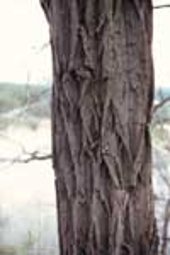

 4
4




List of Bryant RedHawk's Epic Soil Series Threads We love visitors, that's why we live in a secluded cabin deep in the woods. "Buzzard's Roost (Asnikiye Heca) Farm." Promoting permaculture to save our planet.

 4
4




QuickBooks set up and Bookkeeping for Small Businesses and Farms - jocelyncampbell.com




 1
1




Thomas Adams wrote:
Great idea but lost in this is the avocation of using Russian Olive as a fence. It is a non-native, heavy invader of wetlands to the point where it out competes all tree species. I see this missing in a lot permaculture ideas - a lack of understanding natural balance with native plant communities.







 3
3




Thomas Adams wrote:
Great idea but lost in this is the avocation of using Russian Olive as a fence. It is a non-native, heavy invader of wetlands to the point where it out competes all tree species. I see this missing in a lot permaculture ideas - a lack of understanding natural balance with native plant communities.
"People may doubt what you say, but they will believe what you do."










 4
4




Tansy Arron-Walker wrote:Any updates on the fence? I'd love to see pictures!
How long did it take from planting (seeds or whips) to something reasonably stock proof?
QuickBooks set up and Bookkeeping for Small Businesses and Farms - jocelyncampbell.com
 2
2




Celeste Solum wrote:I can't recall which one but BBC had a series on farming in the 1600-1700's and they would use living hedges/fences and waddle them with flexible trees such as alder, but it can be anything really. It was fascinating.




Country oriented nerd with primary interests in alternate energy in particular solar. Dabble in gardening, trees, cob, soil building and a host of others.




Natural Small Batch Cheesemaking A Year in an Off-Grid Kitchen Backyard Dairy Goats My website @NourishingPermaculture














 2
2




Thomas Adams wrote:
Great idea but lost in this is the avocation of using Russian Olive as a fence. It is a non-native, heavy invader of wetlands to the point where it out competes all tree species. I see this missing in a lot permaculture ideas - a lack of understanding natural balance with native plant communities.
Earthworks are the skeleton; the plants and animals flesh out the design.




Permies is awesome!!!




 2
2




My tree nursery: https://mountaintimefarm.com/








 1
1




elle sagenev wrote:Wouldn't willow work just fine? Willow has been making living fences/structures for centuries. So easy to propagate. Grows rather quickly. Can be used for other things when it gets overgrown. Can help reduce fevers and can be soaked to make rooting hormone for other plants. Willow, great tree.
Zone 8b 16”rainfall

|
Willie Smits understands 40 languages. This tiny ad knows only one:
turnkey permaculture paradise for zero monies
https://permies.com/t/267198/turnkey-permaculture-paradise-monies
|







